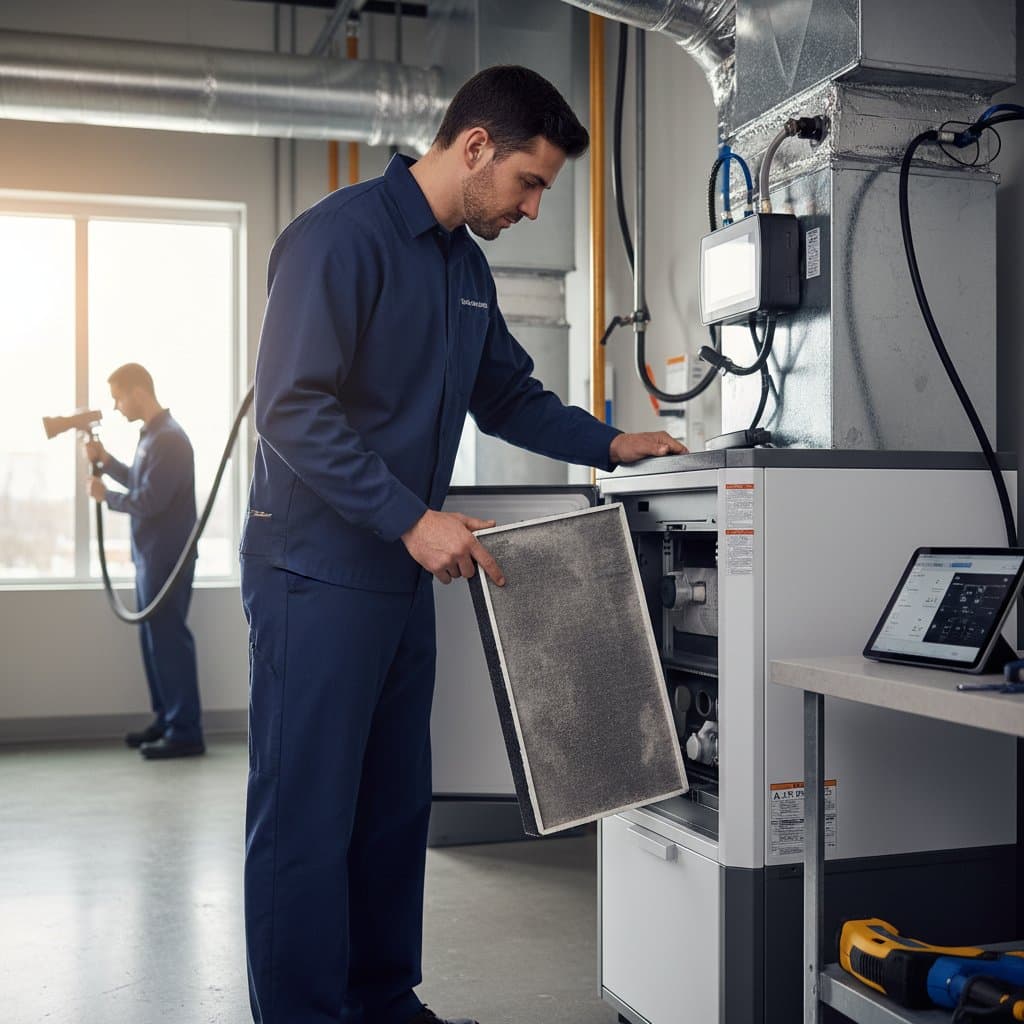Why Spring Tune-Ups Matter for Clearing Winter Air
Winter months trap dust, allergens, and pollutants inside heating systems, leading to poor indoor air quality as temperatures rise. A thorough HVAC tune-up in spring removes these residues, preventing respiratory issues and improving overall comfort. Homeowners who address these concerns early avoid costly repairs and enjoy fresher air from the start of warmer weather.
Regular maintenance extends the lifespan of heating, ventilation, and air conditioning components. Systems that operate efficiently use less energy, which translates to lower utility bills. By focusing on air clearance now, you prepare your home for summer demands while fostering a healthier environment for occupants.
Assessing Your HVAC System's Current State
Begin the process by evaluating the system's performance. Listen for unusual noises such as rattling or humming during operation, which may indicate loose parts or blockages. Check thermostat settings to ensure they respond accurately to adjustments.
Inspect visible components for signs of wear, including frayed wires or corroded connections. Note any areas with uneven temperatures across rooms, as this suggests airflow imbalances. Document these observations to guide your tune-up priorities.
Step-by-Step Guide to Cleaning Air Filters
Air filters capture particles that accumulate over winter, but they require replacement or cleaning every one to three months. Locate the filter compartment, typically near the return air duct or furnace. Remove the old filter and compare it to a new one for size and type compatibility.
For reusable filters, vacuum both sides gently to dislodge debris. Rinse with lukewarm water if the manufacturer recommends it, then allow complete drying before reinstallation. Install a high-efficiency particulate air (HEPA) filter if your system supports it to trap finer pollutants effectively.
- Turn off the HVAC system for safety.
- Slide out the filter and inspect for dirt buildup.
- Clean or replace as needed, ensuring arrows point toward airflow direction.
- Test the system briefly to confirm improved operation.
This simple task can reduce airborne irritants by up to 50 percent, enhancing breathability in your home.
Inspecting and Cleaning Ductwork
Ducts accumulate dust, pet dander, and mold spores during winter inactivity, circulating them when the system activates. Schedule an inspection to identify leaks or damage, using a flashlight to peer inside accessible vents. Seal small gaps with mastic sealant or foil tape to prevent air loss.
For thorough cleaning, hire a professional with specialized tools if ducts show heavy buildup. Homeowners can vacuum vent covers and registers using a brush attachment. Avoid using compressed air, as it spreads particles further.
- Remove vent covers and wash them with mild soap.
- Use a long-handled brush to reach inside ducts.
- Replace covers securely after drying.
Clean ducts improve airflow efficiency, potentially lowering energy use by 20 percent or more.
Balancing Humidity for Optimal Air Quality
Excess humidity fosters mold growth, while low levels dry out skin and airways. Ideal indoor humidity ranges from 30 to 50 percent; use a hygrometer to measure current levels. Adjust your HVAC's humidistat if equipped, or add a standalone dehumidifier for targeted control.
In spring, open windows briefly on dry days to ventilate naturally, but monitor moisture to avoid spikes. Ensure exhaust fans in bathrooms and kitchens vent outdoors to expel humid air. These measures prevent condensation on windows and walls, maintaining clear air circulation.
Professional Tune-Up Essentials
While DIY steps handle basics, a certified technician provides comprehensive diagnostics. They test refrigerant levels, calibrate thermostats, and lubricate moving parts to ensure smooth function. Request a full system flush to remove winter residues from coils and drains.
Technicians also check electrical connections and safety controls, identifying issues before they escalate. Annual professional service costs between 75 and 200 dollars but prevents breakdowns that could exceed 1000 dollars in repairs. Schedule early in spring to avoid peak season delays.
Monitoring and Maintaining Year-Round Benefits
After tune-ups, track air quality with affordable monitors that detect particles and humidity. Change filters quarterly and inspect ducts biannually to sustain improvements. Integrate smart thermostats for automated adjustments that optimize performance without constant oversight.
These habits yield lasting advantages, including fewer allergy symptoms and consistent comfort. Your investment in spring maintenance creates a foundation for energy savings and equipment reliability through all seasons. Experience the difference of proactive care in every breath you take at home.
